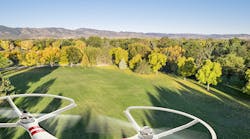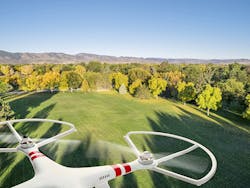Drones have become a major market in the last several years. Most of the market is military and government. However, significant commercial and recreational markets have developed. A recent report from the Teal Group indicated that the drone market amounted to approximately $4 billion in 2014. The Consumer Electronics Association has indicated that it expects the year 2015 to produce strong sales of $105 million. Sales of recreational drones are expected to be roughly 700,000 units. Ongoing exceptional growth is expected in the coming years.
All this exceptional growth has worried the Federal Aviation Agency because of safety concerns with drones interfering with private and commercial aircraft. As a result, the FAA has created some interim rules and regulations that effectively prohibit commercial applications of drones. Yet the FAA has issued over 2,000 permits to some companies for commercial testing. Otherwise, even beneficial applications are basically illegal. (Among companies seeking test permits? None other than Wal-Mart.)
Most recreational and toy drones are not a safety hazard, according to the FAA. But as recreational drones become larger and more capable, they represent somewhat of a threat to commercial aviation. As a result, the Federal Aviation Agency is asking that recreational drones be registered. The FAA has set up a task force to determine what these regulations should be. The goal is to have this registration system in place by mid-December this year. Is that possible in the U.S. government?
In the meantime, there are some FAA regulations already in place and these tell you some of the things you should not do with your drone.
1. Don’t fly over your neighbor’s pool party. Or over any sporting event where many people are gathered. Danger of a crash and privacy are major concerns of most recreational drones. Many drones are difficult to fly and crashes are common. Any new rules and regulations are going to concern the privacy issue and the safety factors involved.
2. Don’t fly within 5 miles of an airport. This is one of the FAA’s current guidelines for recreational drones. While a recreational or toy drone is not likely to bring down a commercial airliner, there are still safety concerns for all aircraft. Both private and commercial pilots have noticed an amazing increase in the number of drone sightings near airports. While no major incidents have yet been reported, no one knows what the future may hold given the dramatic increase in the number of drones flying.
3. Don’t fly higher than 400 feet. This is another one of the FAA’s current recreational drone guidelines. Space of over 400 feet is reserved for standard aircraft.
4. Don’t fly out of line of sight. This FAA guideline asks you to keep the drone in sight at all times so that you can maintain control and avoid crashes and privacy issues. Line of sight varies considerably with the environment and is generally less than 1 mile with an open view. Trees, buildings, and other obstructions can reduce visibility considerably. While many drones have automated flight control without operator intervention, the FAA still wants you to be able to have some visible control over the vehicle.
5. Don’t fail to register your drone with the FAA. While it seems unlikely that the FAA or any government agency can put new rules into place so quickly, this actually may occur. Therefore, in mid-December you should check with the FAA to be sure that you don’t need to register your drone. While the drone police are not likely to come after you, the FAA wants to be able to track a drone to a person if any accidents do actually occur.
All these rules and guidelines just seem like common sense to me. We shouldn’t need more regulation. Yet many drone owners are violating these basic rules. How about the guy who flew his drone on to the White House lawn and crashed there? Dumb dork. Whatever happened to common sense anyway? Hopefully the FAA will make some new rules and regulations that will balance safety and privacy requirements against basic fundamental personal rights. Formal new rules and regulations for recreational and commercial drones are expected to be available sometime next year.

